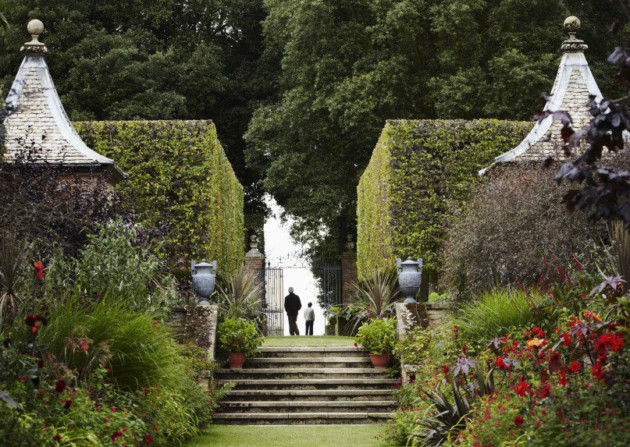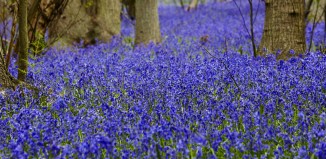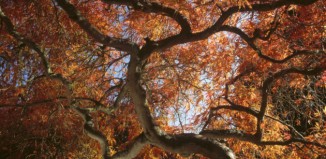Cotswolds gardens

Angharad Moran
Best for spring: Hidcote Manor Gardens, near Chipping Campden
There is so much variety at Hidcote that it’s hard to imagine that one man was behind it all. The garden, which is a maze of interlinking garden ‘rooms’ – each with their own distinct identity – was first created by Lawrence Johnston, after his mother purchased the estate in 1907. It was then further extended in the 1920s and 1930s when Johnston’s friends and visitors would have enjoyed a game of bowls and afternoon tea in the grounds. Johnston was greatly influenced by classic French and Italian-style gardens and took many expeditions to France, where he would collect plant specimens to bring back to the UK. Johnston also acquired a second property, Serre de la Madone in Menton, France, where he also put his gardening skills to work. After dividing his attention between the two properties for many years, he eventually retired to France, leaving Hidcote to the National Trust in 1948.
From the simple porcelain beauty of the White Garden, to the frenzied cottage garden style of the Old Garden, bursting with roses and tulips in delicate shades of ice-cream pinks and vanillas, there is something to appeal to everyone.
As you head further into the garden you’ll find great stretches of formal lawns and planting areas, complete with topiary, divided by the neat lines of yew, beech and holly hedges. In contrast to these formal sections, there are also wilderness areas, where primroses and other wildflowers follow the path of a trickling stream that winds its way through the grounds, creating the feeling that you’re strolling through secluded woodland.
The garden at Hidcote received just over 1,000 visitors during its first season of opening to the public in 1949. Over 60 years later, the garden is more popular than ever, welcoming over 140,000 visitors, who delight in wandering through Johnston’s enchanted creation.
www.nationaltrust.org.uk/hidcote
Best for summer: Kiftsgate Court Gardens, near Chipping Campden
Just a stone’s throw (or short trudge) from Hidcote, you’ll also find another fantastic garden in the form of Kiftsgate. This garden was developed by a Heather Muir, a friend of Lawrence Johnston, in the 1920s after she was inspired by Johnston’s efforts at Hidcote.
Compared to Hidcote, Kiftsgate has a much simpler, informal feel to it. During the summer months the garden’s Rose Border is overrun with the famous Kiftsgate Rose (Rosa filipes), thought to be the largest species of rose in England. Complementing the great clouds of this spectacular white rose, a host of colourful plant life fills the formal garden area around the house and sweeps down the steep slope leading to the lower garden, which was developed in the 1930s. On the decent to the lower garden you’ll pass delicate flowers such as geraniums and cyclamen, as well as plumes of euphorbia or ‘Joyce’s Giant.’ From the lower garden, visitors can also enjoy spectacular views across the Cotswold countryside, where sheep graze peacefully in the adjoining fields.
After inheriting the estate in the mid 1950s, Muir’s daughter Diany Binny took over the running of the garden. She created the semi-circular pool in the lower garden, commissioned sculptures and was instrumental in opening the garden to the public. Today, the garden is under the care of Binny’s own daughter, Anne Chambers, who continues to further develop the grounds, including the addition of a peaceful water garden in place of an old tennis court. Accessible through a small wooden structure at the end of the Yellow Border, and surrounded by tall yew hedges, it is a hidden haven. Visitors can enjoy making their way across large stepping stones to a grassy island at the centre of the rectangular pool of water, while watching droplets of water pour from rows of gilded bronze philodendron leaves.
Best for autumn: Batsford Arboretum, near Moreton-in-Marsh
Spanning some 55 acres and home to one of the UK’s largest private collections of trees, Batsford arboretum was created in the 1890s by Algernon Bertram Freeman-Mitford (better known as Bertie). After inheriting the estate in 1886, Bertie set about demolishing the Georgian House that stood on the site and replaced it with a grand mansion that remains to this day. Bertie would later become the first Lord Redesdale and was also the grandfather of the famous Mitford sisters, the oldest of which based her novel Love in a cold climate on her time at Batsford.
Bertie’s influence on the estate is still tangible. He worked across Asia during the 1860s and introduced aspects of Japanese and Chinese gardens to his own. Some of the bamboo samples he brought back at the time remain at the arboretum today. As you make your way around the grounds, you’ll also come across the Japanese Rest House and the Buddha statue, along with peaceful pools of water crossed with oriental-style bridges and overhung with Japanese maples.
After Bertie, the arboretum passed through several hands and became neglected over the years until it fell into the ownership of Frederick Anthony Hamilton Wills, second Lord Dulverton, in 1956. Along with his head forester, Lord Dulverton added a variety of new trees to the site and managed to raise the status of the arboretum to one of international importance. Today, the arboretum is in the care of the Batsford Foundation, a charitable trust set up by Lord Dulverton in 1984, and bills itself as the most visited arboretum in the UK.
During autumn the arboretum is alight with colour, as faithful evergreens such as Californian redwoods tower over other trees dripping with plump, ruby berries and autumnal foliage. From the fiery reds and deep purples of the cherry trees, to the glistening copper and bronze tones of the maples, the arboretum’s swansong into the winter months is a spectacular sight to behold on a sunny autumn’s day.
Best for winter: Painswick Rococo Garden, Painswick
Spectacular throughout the year, Painswick Rococo Garden is worth visiting during the colder months for a different reason as January and February sees a flurry of snowdrops covering the grounds, along with the winter frost. Although the garden is famed for having one of the largest naturalistic collections of snowdrops in the UK, there’s plenty more to see besides them, with an assortment of statues and structures tucked away within the foliage. Crowning the garden is a decorative exedra, which provides a wonderful frame for the views across the grounds.
Other bijoux structures include the pastel-shaded Eagle House and the Pigeon House which would have been put into good use, providing food for the table all year round. A more natural structure in the form of the Anniversary Maze is also hugely popular with visitors of all ages and was specially designed by a local resident to celebrate the garden’s 250th anniversary in 2000.
Charles Hyett commissioned Painswick house itself, but it was his son, Benjamin, who started to set about creating the gardens in the 18th century. Although it flourished at the time, the garden slowly became overgrown and fell into disuse until the 1970s when garden historians became interested in reviving a Rococo-style garden. Lord Dickinson, who owned the property at the time, was encouraged to revive the gardens at Painswick based on paintings of the original garden designs.
When the garden was redeveloped it was done so in keeping with the original planting, only using species that would have been available to gardeners in the 18th century. This means that visitors today can really get a sense of how the garden would have been enjoyed when it was originally created, and are able to view some unusual species of plant life such as Camellia Japonica and Hamamelis Virginiana, both introduced to England in the 1730s.
The garden is now under the control of the Painswick Rococo Garden Trust which has more recently added a woodland garden to the site, along with a kitchen garden which provides produce for the site’s restaurant.







